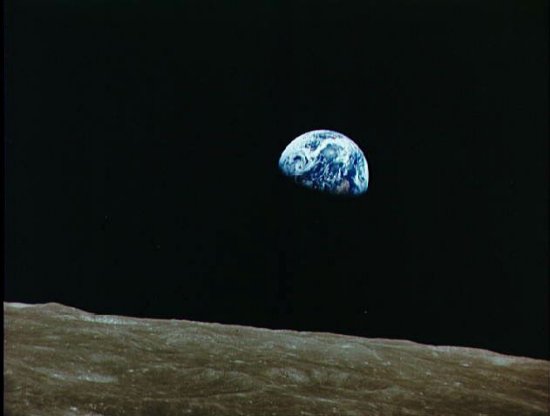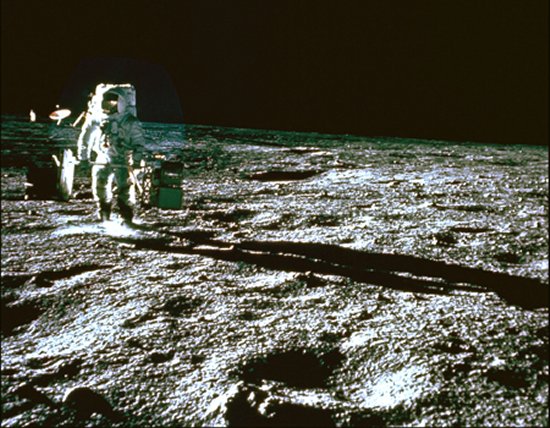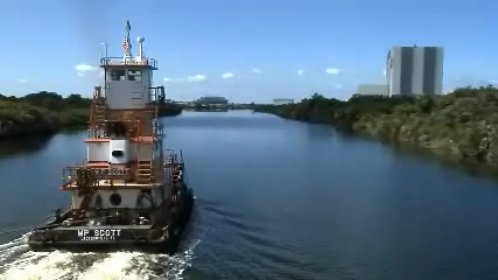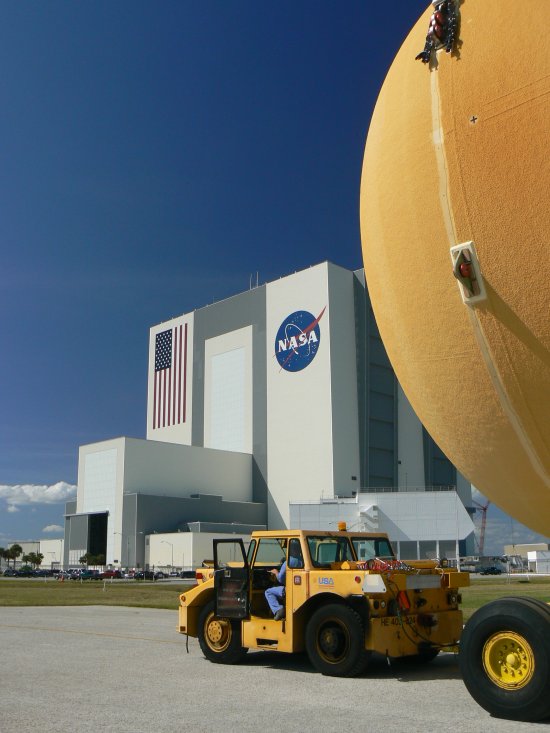As we prepare to say farewell to ET-134 at the dock at Kennedy Space Center, I think back on what an amazing opportunity it was to meet the ships’ crew and two of the most important seafaring vessels that have served the space program. The chance to sail with Pegasus and Liberty Star across some of the most historical waters in the western hemisphere has been something of a personal exploration, like roaming the mountains and forest of the Appalachian Trail or the Pacific Crest Trail, albeit a little less physically strenuous.
To hop onboard a ship and sail across bodies of water that have served as the same pathways of exploration to the farthest reaches of North and South America; served explorers for centuries; setting the stage for building a new world; has been nothing short of an honor and special privilege. It makes me giddy to think about what is to follow in the years, decades, and centuries ahead; space journeys to unknown places with immense unknown possibilities.

This artist’s concept illustrates the idea that rocky, terrestrial worlds like the inner
planets in our solar system, may be plentiful and diverse in the universe.
Credit: NASA/JPL-Caltech View all blog images in this Flickr gallery
The time is coming for an explosion of human exploration across the solar system; a tide of exploration the like of which we have not seen in recent history. New technologies, materials, navigation and communication devices, foods, fuels, operational techniques, SpaceLogistics, SpaceEngineering, strategies and ideas are coalescing to form the dynamo to inspire and drive the next biggest step yet in human history, the human exploration of the solar system and beyond.
Sources of water are abundant, even on our moon, but especially on ice capped moons and the polar regions of planets.
Thanks to NASA’s orbiting “Great Observatories” telescopes — Spitzer in infrared, Hubble in visible light, the Compton Gamma Ray Observatory and Chandra in X-ray — and thanks to many government and university operated ground based observatories, we now know of the existence of almost 300 planets; at least one with tantalizing Earth-like characteristics; 430 light years away.

The Crab Nebula, the result of a supernova seen in 1054 AD. Credit: NASA, ESA,
J. Hester, A. Loll (ASU); Acknowledgement: Davide De Martin (Skyfactory)
Unfortunately, timing is not always on the side of the explorer. For instance, by the early 1700s the American frontier had been defined by the Appalachian Mountains; a useful geographical border for a hundred years and defined by policies of the home government in England 2,500 miles away across the Atlantic Ocean. The home government forbade general exploration beyond the Appalachians in order to prevent hostilities with the Native American tribes and thus implemented the most important element of home rule policy; insure fur trading went east to England via American ports.
While American explorers were prevented from a general advance to the west, aggressive and highly motivated Spanish explorers had long since explored the southwestern reaches of America and French trappers and traders had pushed well beyond the Great Lakes and the Mississippi River and already knew well the Indians of the Great Plains, particularly the great Sioux nation.
It wasn’t until the early 1800s that American “Mountain Men” trickled west of St. Louis. But when America finally got going west, it got going with great abandonment and enthusiasm. The 1804-1806 Lewis and Clarke expedition sponsored by President Jefferson finally found the Northwest Passage and set the stage for the great treks west by the millions that would follow the wastage of the Civil War.
In 1838 President Martin Van Buren sent a small, inexpensive but adventurous six-vessel American fleet, known as the Exploring Expedition, to explore the Pacific in relatively tiny ships; learning firsthand the perils of sailing in Polynesia and along the way made a very minor side trip from those warm waters to discover the coast of Antarctica. Of course, English whalers and Spanish galleons had already passed through these waters for over a hundred years.

Antarctica, a frozen desert. Credit: NASA/Carnegie-Mellon University
By 1840 the dream to go west was gaining momentum and the Conestoga wagons were being built, but they wouldn’t be called by that name for many more years. What a great name for a future space ship designed to carry cargo, the Conestoga Maru.
It is now 2009 and the clock of exploration is ticking again. Timing is everything. In the 1960s we went to the moon because the timing of competition on the international scene was right. In 1998 we started building our first big space station, the International Space Station, because the timing for partnering was right. Building the station was hardly an end game, it was costly and hard work — worthwhile as our first long term way station in space; a place to test ourselves and to hone our operational procedures like automated rendezvous and docking; to analyze, to study, to engineer, to use, break and fix things that keep spacefarers healthy like the COLBERT treadmill and to keep them alive; a stepping stone of exploration and simultaneously a place of scientific study for exploration and to better life on Earth.
The pathways and signal lights have been lit; ignited by every human in human experience carrying a torch that ventured to the next valley in search of a better life or simply because another valley might be there, over the mountains; lit by every settler who never made it to across the prairies to Oregon or California and by those that did; lit by every lost explorer smashed on the rocks at La Tierra del Fuego; lit by Magellan and Cook and lit by every astronaut spacefarer who took the risk to fly into space.
The clock is ticking. Humanity has arrived very close to the opening of the new path, a new era of exploration. The pathways of seafarers defined by compass bearings across the oceans, guided by the sun and the stars, will be replaced with computer-generated interplanetary (eventually interstellar) trajectories, some coasting in the gravity field, some using gravity assist from planets to increase their energy, some thrusting during most of the journey, to far distant planets and moons.

Earthrise, as seen from the moon during the Apollo 8 mission. Credit: NASA
Way stations for stock piling fuels, food, water, supplies, and all forms of hardware for spaceflight will be established along the path to sustain these deep space missions. However, settlers coming to stay will have to learn to live off the land using local planetary resources for developing energy sources, building habitats and constructing a support infrastructure.
It would be fitting if at least some of the way stations be named Detroit, Michilimackinac, Laramie or Oswego. Search and rescue spacecraft will patrol the frontier to bring back exhausted and depleted survivors or damaged space ships; just like U.S. Coast Guard does for us. Perhaps our future life guards will be named the Space Guards. An infrastructure of colonies will grow up around launch pads, landing pads, watering holes, logistics bases, drilling and mining operations, way stations, and science exploration sites — and who knows, maybe even archeology sites. Wouldn’t that be something. How about excavating a giant, shinny, black monolith on Europa!
John F. Ross writes today in his recent book about Robert Rogers, of Rogers Rangers fame. Speaking of the days of early exploration of the American continent, he says, “Certainly British colonists in Boston and Philadelphia could imagine vast stretches of forest, but understanding America was like understanding the solar system before spaceflight. People had a sense of the solar system as an immense place, punctuated by planets and stars, but not until ships blasted off into space and probes raced to its outer edges did humans look at the cosmos in new, revolutionary ways, most notably gaining the insight that the fragile orb of Earth is a finite place. And only when Europeans gained purchase on vast North America — through descriptions and explorations — could their perceptions change from dread to eager embrace of the immense possibilities.”
NASA scientist Peter Curreri of my own Marshall Space Flight Center says it this way: “The first astronauts plant the flag, like Columbus. Then settlers begin to live in the solar system as in early America, permanently (like Jamestown), except now it’s a space station, an asteroid base or a lunar base. They live off the land, and become more independent. They find riches and resources beyond the expectations of robotic surveys. They make use of unlimited energy from space solar power, and begin to develop large habitats on their new home. They develop a solar system economy that would astound us in the same way that the eventual richness of the United States astounded the old world. Eventually this new rich solar system society has the financial wealth to boldly push into interstellar space to the new solar systems beyond like when America boldly put men on the moon.”

Apollo astronaut on the moon. Credit: NASA
Whatever the immense possibilities are, in the early years it will certainly be rough; like camping without any amenities; tougher than cresting the Appalachians or crossing the Mississippi; journeying into a very unforgiving unknown; a journey for the stoutest, stalwart, creative, innovative, independent, and curious.
I might mention one final note about exploration. When people do venture in large numbers into space, no one in space will have to worry about finding a job because the most sought after person in the solar system will be your neighborhood mechanic.
Good luck to all of us — all 6.8 billion of us.







